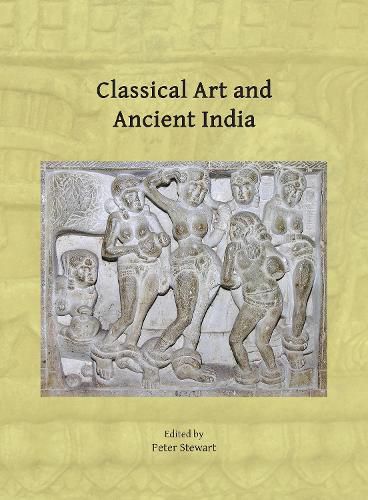Readings Newsletter
Become a Readings Member to make your shopping experience even easier.
Sign in or sign up for free!
You’re not far away from qualifying for FREE standard shipping within Australia
You’ve qualified for FREE standard shipping within Australia
The cart is loading…






Throughout the centuries of classical, Graeco-Roman history, India had strong connections with the world of the Mediterranean and Western Asia, sometimes by land or as a result of direct conquest, at other times through the maritime links of the Indian Ocean. In the Hellenistic and Roman Imperial periods (c. fourth century BC to fifth century AD) the movement of artistic ideas between these regions intensified. It appears to be vividly attested in the earliest cave-paintings at Ajanta in Maharashtra, for example, and in the Buddhist sculptures of Andhra Pradesh. In the first two centuries AD, when trade with India was central to Roman luxury consumption and brought colossal revenue to the Empire, Roman coins and other artefacts reached India in abundance and artistic connections are manifest, albeit often subtle and elusive.
Building on the Classical Art Research Centre's earlier Gandhara Connections project, Classical Art and Ancient India brings together research presented by international scholars at a workshop in Oxford in 2023. The papers, which include a keynote address by the historian William Dalrymple, seek to make sense of the cross-cultural artistic currents that joined India to the classical world. They offer new insights on particular topics and refine our picture of the broader cultural relationship. In doing so, they also question some of the assumptions that underpin it.
$9.00 standard shipping within Australia
FREE standard shipping within Australia for orders over $100.00
Express & International shipping calculated at checkout
Throughout the centuries of classical, Graeco-Roman history, India had strong connections with the world of the Mediterranean and Western Asia, sometimes by land or as a result of direct conquest, at other times through the maritime links of the Indian Ocean. In the Hellenistic and Roman Imperial periods (c. fourth century BC to fifth century AD) the movement of artistic ideas between these regions intensified. It appears to be vividly attested in the earliest cave-paintings at Ajanta in Maharashtra, for example, and in the Buddhist sculptures of Andhra Pradesh. In the first two centuries AD, when trade with India was central to Roman luxury consumption and brought colossal revenue to the Empire, Roman coins and other artefacts reached India in abundance and artistic connections are manifest, albeit often subtle and elusive.
Building on the Classical Art Research Centre's earlier Gandhara Connections project, Classical Art and Ancient India brings together research presented by international scholars at a workshop in Oxford in 2023. The papers, which include a keynote address by the historian William Dalrymple, seek to make sense of the cross-cultural artistic currents that joined India to the classical world. They offer new insights on particular topics and refine our picture of the broader cultural relationship. In doing so, they also question some of the assumptions that underpin it.